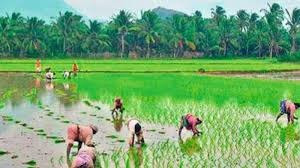FARMING SYSTEM



Poverty is far from being eradicated. It is estimated 23.6% of Indian population, or about 276 million people, lived below $1.25 per day on purchasing power parity . Poverty alone does not lead to malnutrition, but it seriously affects the availability of adequate amounts of nutritious food for the most vulnerable populations. Over 90 percent of malnourished people live in developing countries.
Most major food and nutrition crises do not occur because of a lack of food, but rather because people are too poor to obtain enough food. Non-availability of food in markets, difficult access to markets due to lack of transportation, and insufficient financial resources are all factors contributing to the food insecurity of the most vulnerable populations. People are increasingly dependent on international markets for all or part of their food supply, particularly between harvest periods.
Water is synonymous with life. Lack of potable water, poor sanitation, and dangerous hygiene practices increase vulnerability to infectious and water-borne diseases, which are direct causes of acute malnutrition.
Seasonal migrations have long been a livelihood strategy for the poorest households in India, as a mean to access food and money through casual labour. Children and women are the most affected, suffering from deprivation during migrations impacting their health condition. They live in challenging conditions with unsafe drinking water, no health care services and in make-shift tents. They carry their children to work where they are also exposed to unhygienic conditions leading to various health problems, including poor nutrition.
In 30 years, the number of natural disasters droughts, cyclones, floods, etc.linked to climate change has increased substantially. The effects of climate change are often dramatic, devastating areas which are already vulnerable. Infrastructure is damaged or destroyed; diseases spread quickly; people can no longer grow crops or raise livestock.
According to UN studies in over 40 developing countries, the decline in agricultural production caused either directly or indirectly by climate change could dramatically increase the number of people suffering from hunger in the coming years
Nice❤️
ReplyDeleteNyc initiative
ReplyDeletegreat work👏🏻
ReplyDeleteGreat Job 👏 & U have done a worthable Research...All the best ✊
ReplyDeletePoverty should be eradicated.
ReplyDeleteGreat job and good research for the stats.
Nice analysis
ReplyDeleteI really got soo much usefull information thank you... We have to do something to solve these problems..great article 👌
ReplyDeleteGood
ReplyDeleteNyc work ra ....❤
ReplyDeleteReally nice ra....good work:)
ReplyDeleteGood work😃
ReplyDeleteWe try to control of this
ReplyDelete